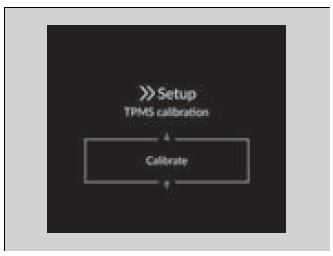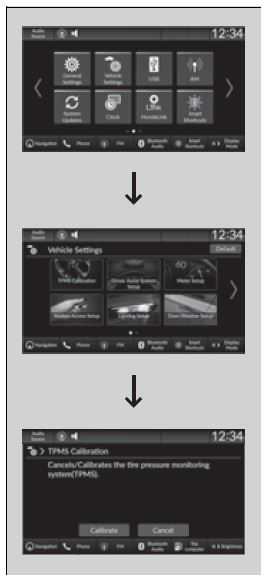2022 Honda Civic Tire Pressure Monitoring System (TPMS) User Manual
A highly advanced Tyre Pressure Monitoring System (TPMS) is standard on the 2022 Honda Civic, improving both performance and safety while driving. This cutting-edge technology continuously checks the air pressure in every tyre and gives the driver data in real-time. The TPMS monitors tyre pressure levels to assist in guaranteeing the best possible handling, grip, and fuel economy. By notifying drivers of any notable variations in tyre pressure, the 2022 Honda Civic’s TPMS provides peace of mind and enables timely action to avert any problems. The TPMS extends the lifespan of a vehicle and makes driving easier thanks to its cutting-edge technology. The 2022 Honda Civic’s TPMS prioritises performance and safety and is a dependable friend whether travelling long distances or through cities.
2023 – 2024 Honda Civic Specs, Price, Features, Mileage (Brochure)
Agile Handling Assist
Lightly brakes the front wheels, as needed, when you turn the steering wheel and helps support the vehicle’s stability and performance during cornering. The agile handling assist cannot enhance stability in all driving situations. You still need to drive and corner at speeds appropriate for the conditions and always leave a sufficient margin of safety. When the VSA® system indicator comes on and stays on while driving, the agile handling assist does not activate. You may hear a sound coming from the engine compartment while the agile handling assist is activated. This is normal.
2022 Civic TPMS Guide
Instead of directly measuring the pressure in each tire, the TPMS on this vehicle monitors and compares the rolling radius and rotational characteristics of each wheel and tire while you are driving to determine if one or more tires are significantly under-inflated. This will cause the low tire pressure/TPMS indicator to come on and a message to appear on the gauge.
The system does not monitor the tires when driving at low speeds. Conditions such as low ambient temperature and altitude change directly affect tire pressure and can trigger the low tire pressure/TPMS indicator to come on.
Tire pressure checked and inflated in:
- Warm weather can become under-inflated in colder weather.
- Cold weather can become overinflated in warmer weather. The low tire pressure/TPMS indicator will not come on as a result of overinflation.
The TPMS may not function properly if tire type and size are mixed. Make sure to use the same size and type of tire.
Checking and Maintaining Tires - The low tire pressure/TPMS indicator may come on with a delay or may not come on at all when:
- You rapidly accelerate, decelerate, or turn the steering wheel.
- You drive on snowy or slippery roads.
- Tire chains are used.
The low tire pressure/TPMS indicator may come on under the following conditions:
- A compact spare tire is used.
- Tire chains are used.
TPMS Calibration – TPMS Owner’s Manual
You must start TPMS calibration every time you:
- Adjust the pressure in one or more tires.
- Rotate the tires.
- Replace one or more tires.
Before calibrating the TPMS:
Set the cold tire pressure in all four tires. Checking Tires
Make sure:
- The vehicle is at a complete stop.
- The power mode is in ON.
Continuously variable transmission models
- The transmission is in (P.
Manual transmission models
- The shift lever is in (N.
- Not available on all models.
The Vehicle Stability AssistTM (VSA®) system, Vehicle Stability Assists (VSA®) OFF, Adaptive Cruise Control (ACC)*, Adaptive Cruise Control (ACC) with Low-Speed Follow*, low tire pressure/TPMS and safety support indicators may come on in amber along with a message in the gauge when you set the power mode to ON after reconnecting the battery. Drive a short distance at more than 12 mph (20 km/h). Each indicator should go off. If any do not, have your vehicle checked by a dealer. TPMS cannot be calibrated if a compact spare tire is installed. The calibration process requires approximately 30 minutes of cumulative driving at speeds between 31-62 mph (50-100 km/h). During this period, if power mode is set to ON and the vehicle is not moved within 45 seconds, you may notice the low tire pressure/TPMS indicator comes on briefly. This is normal and indicates that the calibration process is not yet complete. If the tire chains are installed, remove them before calibrating the TPMS. If the low tire pressure/TPMS indicator comes on even when the properly inflated specified regular tires are installed, have your vehicle checked by a dealer. We recommend that the tires be replaced with the same brand, model, and size as the originals. Ask a dealer for details.
Models with 7-in. Color Touchscreen
- You can calibrate the system from the settings on the driver information interface.
Press the (home) button, to select Settings, then press the left selector wheel. - Vehicle settings appear on the display.
- Roll the left selector wheel. TPMS calibration appears on the display.

- Press the left selector wheel.
The display switches to the customization setup screen, where you can select Cancel or Calibrate. - Roll the left selector wheel and select Calibrate, then press the left selector wheel. The calibration started screen appears, then the display returns to the customization menu screen.
- If the Calibration failed to start message appears, repeat step 4.
- The calibration process finishes automatically.
Models with 9-in. Color Touchscreen
You can calibrate the system from the customized feature on the audio/information screen.
- Set the power mode to ON.
- Press the button.
- Select Vehicle Settings.
- Select TPMS Calibration.
- Select Calibrate or Cancel.
- If the Calibration Failed To Start. a message appears, repeat step 5.
- The calibration process finishes automatically.
FAQ’s
The Tire Pressure Monitoring System (TPMS) in the 2022 Honda Civic is a safety feature that monitors the air pressure in the tires and alerts the driver if there is a significant loss of pressure in any tire.
The TPMS in the 2022 Honda Civic uses sensors to monitor the air pressure in each tire. If the pressure in any tire drops below a certain threshold, it triggers a warning light on the dashboard to alert the driver.
The TPMS in the 2022 Honda Civic helps drivers maintain optimal tire pressure, which improves fuel efficiency, extends tire life, and enhances safety by reducing the risk of tire blowouts or accidents caused by underinflated tires.
The TPMS in the 2022 Honda Civic is designed to be highly accurate, but it’s still important for drivers to manually check their tire pressure regularly to ensure optimal performance and safety.
Yes, the TPMS sensors in the 2022 Honda Civic can be recalibrated if necessary. This may be required after replacing tires or performing other maintenance on the vehicle.
It’s recommended to check the tire pressure in your 2022 Honda Civic at least once a month, as well as before long trips or when carrying heavy loads.
If the TPMS warning light comes on in your 2022 Honda Civic, you should pull over in a safe location and check the air pressure in all four tires. If any tire is significantly underinflated, it should be inflated to the recommended pressure as soon as possible.
No, the TPMS in the 2022 Honda Civic cannot be disabled, as it is a mandatory safety feature.
In most cases, the TPMS in the 2022 Honda Civic will automatically reset after the tires are inflated to the recommended pressure. However, if the TPMS warning light remains on after inflating the tires, it may be necessary to manually reset the system.
Yes, aftermarket wheels can affect the TPMS in the 2022 Honda Civic if they are not compatible with the TPMS sensors or if the sensors are not installed correctly.
Using snow chains may trigger the TPMS warning light in the 2022 Honda Civic due to the change in tire circumference. However, once the snow chains are removed, the TPMS should return to normal operation.
Yes, the TPMS sensors in the 2022 Honda Civic can be replaced if they are damaged or malfunctioning.
It depends on the trim level and configuration, but some versions of the 2022 Honda Civic come equipped with a temporary spare tire, while others may only have a tire repair kit.
No, it’s not recommended to inflate the tires to a higher pressure than recommended, as this can affect handling, ride comfort, and tire wear. It’s best to follow the manufacturer’s recommended tire pressure for optimal performance and safety.
Useful Links
View Full User Guide: Honda Civic Hatchback 2022 User Manual
2023 – 2024 Honda Civic Specs, Price, Features, Mileage (Brochure)


